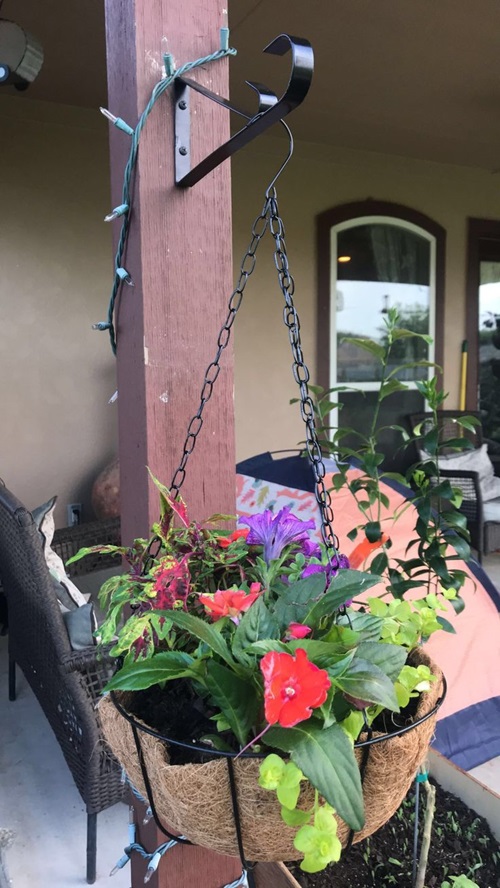You can’t Water Plants in Hanging Baskets like your usual ones in pots and raised beds! Discover the best ways to keep your danglers thriving!
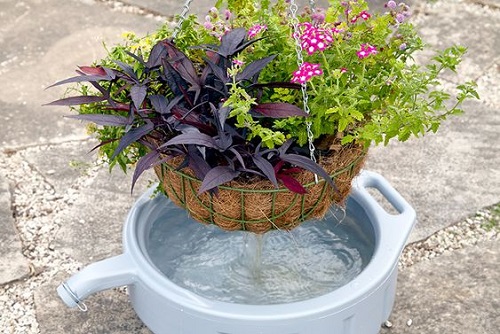
Be it ferns, trailers, vines, or any other kind, plants in hanging baskets take home decor to the next level! But watering them the wrong way could quickly lead them to wilt, dry up, or perish entirely. To water plants in hanging baskets, it’s essential to consider various factors.
The height at which they hang from, container size, amount of wind and sunlight they are exposed to, soil texture, and the plant’s distinct needs—all affect how we hydrate them. Our expert watering tips will help your danglers thrive and look their best. Let’s dive in!
Best Ways to Water Plants in Hanging Baskets
1. Water Early Morning
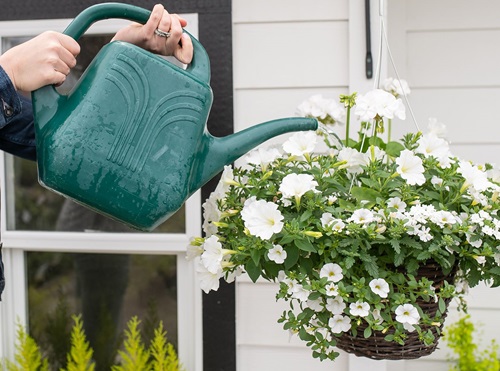
Breakfast of champions? It’s early morning water for our hanging plants, between 5 and 10 am. This allows them to amply hydrate and prepare for the day before the blazing sun kicks in! And given that hanging containers typically experience the sun a little more intensely than ones in the garden, this is crucial to fortify your danglers.
Unless it’s peak summer, avoid watering hanging plants in the evening to prevent root rot and disease from wet foliage. And temper the frequency of hydration according to weather, climate, and growing conditions. Young plants need regular watering since their roots are still forming. However, make sure they aren’t waterlogged.
2. Use a Long Spout Watering Can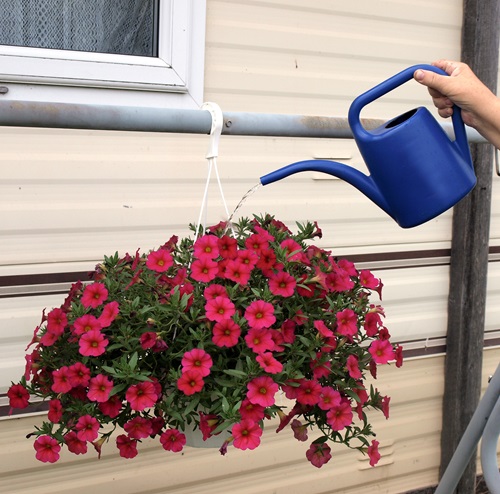
Hanging baskets are often difficult to water because they may be placed at a height that is inconvenient to reach regularly. Simplify your work by using a watering can with a long spout that can directly reach the soil and roots without dampening the foliage. This also helps reduce water wastage, and some cans look quite aesthetic!
We recommend that you don’t move or dislodge the plant often, while it may seem like a logical thing to do. Your plant doesn’t want to be disturbed so much, and it is not practical with heavier or more delicate varieties.
3. Bottom Watering

When you water plants in hanging baskets, there is a risk of over-hydrating the soil and especially the foliage. As you know, this is not good for your plants. In this method of bottom-focused watering, you can place your hanging pot in a water-filled tray so the soil absorbs moisture from beneath.
Remember to use a tray deep enough to allow water to rise to the base of the container. Ensure the pot has ample drainage holes to pull up water in a potting mix. This method is best suited for plants that dislike wet foliage, such as African violets. Other plants include ferns, fuchsias, begonias, and spider plants.
4. Use Self-Watering Baskets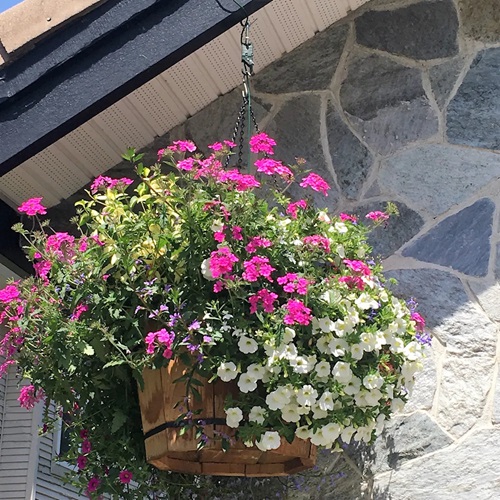
If you are a busy gardener who wants to keep the hanging plants lush and healthy, go for a self-watering hanging basket. These containers come with a reservoir at the bottom that gradually releases water. The reservoir collects water drained from the soil during watering and feeds it back through tiny capillaries—a system of tubes or wicking materials to pull up water.
This moistens the soil from the bottom as and when required, reducing water wastage and frequency of manual watering, freeing you up to do other chores! You can buy them from an online store or easily DIY them at home.
5. Use a Watering Globe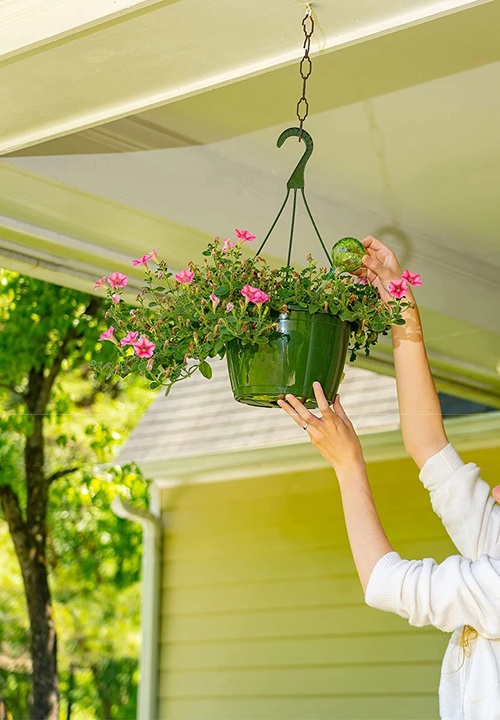
This super fun gardening tool is a mini water reservoir for your hanging plants. A watering globe has a bulbous top that holds water and a narrow stem that is inserted in the soil. Made from glass or plastic, it is see-through, so you can measure how much water is left inside.
Fill the globe with water from the top, and push its stem into the soil, closer to the plant roots. As the soil dries out, the globe draws in air from around it, slowly pushing small quantities of water into the soil. This process recurs till the globe is empty in about two weeks. Simply refill and repeat the steps!
6. Misting
While many plants don’t like to get their foliage wet, tropical and humidity-loving ones like philodendron enjoy an occasional misting, especially in hanging baskets that are more prone to dry up with constant exposure to wind and sun. Plants like ferns and orchids love misting, as it boosts humidity for shorter periods of time.
However, succulents, cacti, and some herbs could suffer from mold and fungal diseases with too much moisture. So, know your plant and decide accordingly. You can also pair misting with wiping your plant’s leaves, making it shinier and combat pests like spider mites.
7. Mulching
It’s difficult to access high-hanging planters to water regularly, especially if the plant is too heavy or delicate. Mulching is your answer to this! Applying a thin layer of mulch to the soil in hanging baskets will help protect the soil from extreme heat and light. It decreases evaporation, reducing the need to water as frequently, and has a host of other benefits.
You can choose organic mulch, which contains a good amount of light materials that break down easily and add nutrients to the soil, such as wood chips, straw, or composted leaves.
8. Shelter from Wind and Sun
Extremely windy and sunny spots will increase transpiration in hanging plants, leading to water loss and stress. These can quickly strip the plant of layers of moisture and dry out the soil, dehydrating and harming it.
Find a sheltered spot that shields your plants from gusts of wind and direct, harsh sun so the medium remains moist and the plant can chill without constant watering. It will also help prevent the soil from being blown away or disturbed. You can also use shade cloths or wind barriers like lattice panels and trellises for this.


